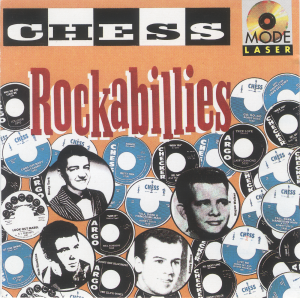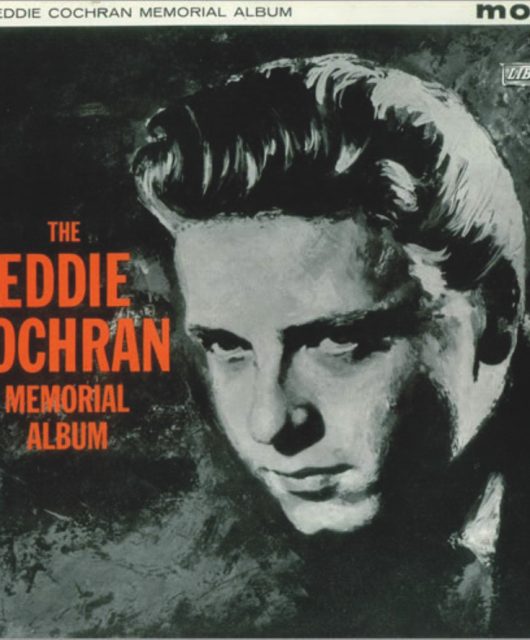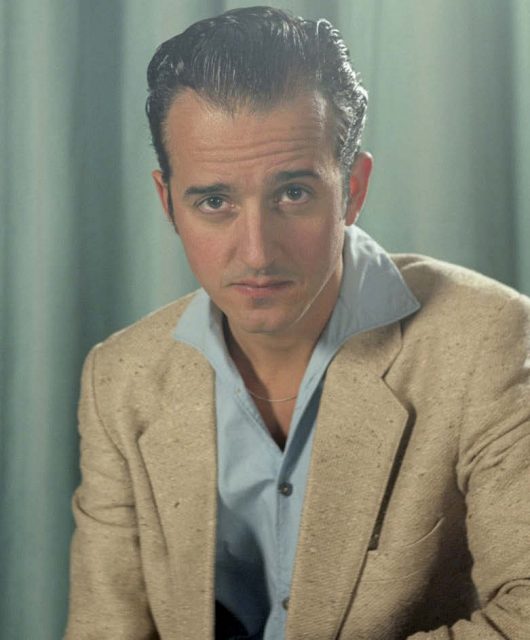A healthy debate still rages over exactly when the term ‘neo-rockabilly’ came into force. One thing is certain, though – it kicked up a storm in the live music scene on both sides of the Atlantic as its practitioners hotwired the sounds and style of classic 50s rock’n’roll with punk attitude…
The roots of neo-rockabilly weave a tangled web indeed. Was it an unholy union inspired by the spirit of punk, or simply a new generation rediscovering a wealth of underground artists from the 1950s that the mainstream music business had seen fit to sweep under the carpet? Even the title itself is a contentious issue. “It was a term used by a couple of journalists back then, but more in the sense of the word, as in ‘Neo, a new form of the music’ rather than a complete genre,” Clint Bradley of The Blue Cats explains.
“Once we started to play gigs in our own right, at places like Dingwalls, the Hope & Anchor, the Marquee, Rock Garden, etc, that’s when what they now call ‘Neo’ really started to live and breathe.
“That’s when it became a genre in its own right, I think. The kids from the ’billy scene could come and let go without the constraints of the traditionalist club rules and the new curious audience from the ska scene, punk and Oi! scenes could come as well without any bad vibes.”
In the second half of the 1970s, rock’n’roll was in rude health across the UK, but as the decade drew to a close something new was stirring in the well-established rockin’ scene in Blighty. Punk had undeniably changed the musical landscape and once the last brick had been thrown in the notorious 1977 sub-cultural clashes of the Kings Road and Sloane Square, the spirit of raw, rebellious rockabilly and the have-a-go nature of punk were – on paper at least – a blueprint for a new generation of enlivened rockers.
With Matchbox’s Rockabilly Rebel ringing in their ears and images of Shakin’ Stevens emanating from the TV on shows such as Top Of The Pops and Get It Together, this new breed were digging deeper into the very roots of rock’n’roll to uncover hidden rockabilly gems. The 1976 reissue of Hank Mizell’s Jungle Rock had been a Top 5 chart hit in the UK, which hinted that there was a wild and wonderful world to discover beyond heavy hitters such as Perkins, Orbison, Holly, the Killer and the King – however, tracking down these sounds required serious graft. This was a time when the 24/7 availability of music at your fingertips was a distant dream that not even the boffins on the BBC’s Tomorrow’s World could envisage.
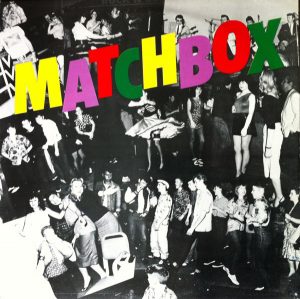 Record labels realised that demand for less well-known rockabilly artists was on the up and a wave of compilation albums revealed there were some untamed sounds out there waiting to be rediscovered. Alan Wilson of Western Star Recording Company and The Sharks remembers it well: “In the mid-70s, I was buying every rare rockabilly compilation that was released… and they were coming out weekly! It was an amazing time. All this stuff we’d never heard, LP after LP. Chess Rockabillies, Imperial Rockabillies, CBS Rockabilly Classics, Hollywood Rock ’n’ Roll… a seemingly endless succession of gems. I loved it. I always used to listen to It’s Rock ’n’ Roll on Saturday nights on BBC Radio 1 with Stu Colman and Geoff Barker, as they’d play all this stuff as it was emerging.”
Record labels realised that demand for less well-known rockabilly artists was on the up and a wave of compilation albums revealed there were some untamed sounds out there waiting to be rediscovered. Alan Wilson of Western Star Recording Company and The Sharks remembers it well: “In the mid-70s, I was buying every rare rockabilly compilation that was released… and they were coming out weekly! It was an amazing time. All this stuff we’d never heard, LP after LP. Chess Rockabillies, Imperial Rockabillies, CBS Rockabilly Classics, Hollywood Rock ’n’ Roll… a seemingly endless succession of gems. I loved it. I always used to listen to It’s Rock ’n’ Roll on Saturday nights on BBC Radio 1 with Stu Colman and Geoff Barker, as they’d play all this stuff as it was emerging.”
Elsewhere, tracking down the sounds required more perseverance. “Most unknown stuff was found by chance, just picking up an album that looked rockin’ on the cover,” says Philip ‘Doyley’ Doyle of Diablo Records with a laugh. “My old man brought me home the Shakin’ Pyramids album without the cover that he found at a market, but he thought the name sounded rocking.”
“It was just a hunting game really,” recalls Bradley. “I was lucky that in Southampton we had Henry’s Records, run by a fanatical roots music lover. I got a lot of my obscure stuff from him. When I first heard Love Me by The Phantom it kept me up all night!”
Boz Boorer of The Polecats says these compilations were key: “We didn’t know what we started playing was rockabilly. To us, it was a clicky-sounding countryish rock’n’roll, but we veered towards those songs, then Rare Rockabilly came out on MCA and that was it… we were off!”
Something was happening to the rockin’ scene as this rockabilly revival crept in. Although the music press at the time would have you believe that a new generation only leapt on board as soon as the Stray Cats left Robert Gordon and Levi Dexter behind in the States and touched down in England in the summer of 1980.
With their big sound and towering pompadours, they gained the lion’s share of attention from the music (and fashion) press, but the truth was they came to the UK because it boasted a rockin’ scene that was already well established.
DJ, promoter and Fury Records boss Dell Richardson remembers the early transition. “I really noticed the change in the scene when we were filmed in this documentary called Born Too Late – The Rockabilly Boom. This was 1978 and if you look at the hairstyles, you will see that there are still Teddy boy quiffs and younger lads with flat top haircuts. I was also running a youth club in Uxbridge called The Unit One.
The walls of the club were draped in posters and images of rock’n’roll stars. I would DJ at the club every week and even book bands that were just starting out in life, like The Polecats, Whirlwind, the Frantix, Blue Cats, Rhythm Cats, Matchbox… There were Teddy boys coming to the club and I still had my drape jacket. Many of the young lads were looking at photos of Mac Curtis and Charlie Feathers with Army-style flat top hairstyles.
On a Saturday in Harrow, they would go to Tony’s Barbers, show him photos and say to him, ‘I want this US-style flat top’. After a few weeks, Tony had some blown-up photos in the window of the shop with a sign saying ‘get your flat top haircut here’. In one chair, you would have a Ted getting his ducktail haircut and next to him a hep cat with his new look.”
Alan Wilson also noticed those subtle changes: “I don’t remember a point when it happened. But I was suddenly aware in the late 1970s that rockabilly kids were dressing differently… pegs and Hawaiian shirts – the Teds didn’t much go for that.”
Other than fashion choices, there were other elements that British rock’n’roll’s old guard were not that keen on. Although the spirit of punk offered a fresh perspective to many emerging rockabilly acts, there was still some bad blood, which refused to be washed away. Even though bands like Whirlwind became the support act of choice for Blondie, The Clash and Ian Dury, while The Meteors were dragging rockabilly to the dark side with great success, the genres remained unlikely bedfellows for some time.
“Me and the guys from the rockabilly band Crazy Wolves used to put on a rock’n’roll hop every month at the North Star Hotel in Dublin,” says Doyley. “It was full of teddy boys and I got my Stray Cats patches ripped off my jacket by them, as they were considered punk at the time.”
Clint Bradley remembers viewing the rockin’ divide from the stage. “In 1979, in my first band, Little Tony And The Tennessee Rebels, we did a tour with The Polecats and The Flying Saucers. In Berlin, we played at a club packed with rockabillies and punks. Both myself and Tim Polecat said, ‘you’d never see that at home’,” grins Bradley. “We should have been called Spurdog, but the rockabilly agent we were with came up with the Little Tony name, because he thought Spurdog was too punky and would upset people. He also told me to stop wearing Doc Martens.”
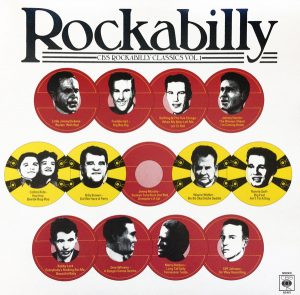 With such vibrant activity, it was inevitable that press and major label attention would follow. The NME focused on an evening at the Royalty dance hall in Southgate and produced their legendary “Rockabilly The Kid” cover story in February 1980. However, less than six months later, the same paper proved how little they actually knew about the scene as their Stray Cats cover proclaimed they had news of “how Yankee quiffabilly put the bop back in Britain”. Rival rag Sounds had their own weekly rockabilly chart lurking between their pages, and even Melody Maker joined the throng with cover stories featuring The Cramps and the Stray Cats.
With such vibrant activity, it was inevitable that press and major label attention would follow. The NME focused on an evening at the Royalty dance hall in Southgate and produced their legendary “Rockabilly The Kid” cover story in February 1980. However, less than six months later, the same paper proved how little they actually knew about the scene as their Stray Cats cover proclaimed they had news of “how Yankee quiffabilly put the bop back in Britain”. Rival rag Sounds had their own weekly rockabilly chart lurking between their pages, and even Melody Maker joined the throng with cover stories featuring The Cramps and the Stray Cats.
“It’s like all things when the mainstream discovers a subculture, it’s intense overkill for a year,” notes Bradley wryly. “When the Stray Cats got signed to Arista, The Blue Cats, along with The Meteors and the Polecats, were suddenly under the microscope, even though we’d been right there under their noses beforehand.”
Even though the mainstream music business may have had the perception that neo-rockabilly was no more than an early-80s fad, the truth was that the genie was well and truly out of the bottle, and a host of labels and bands sprang up, creating a legacy that continues to this day. Roy Williams’ Nervous Records led the way and released the early recordings from new talent such as The Polecats, Restless, The Deltas, The Sharks, The Ricochets and Buzz And The Flyers.
The well-established Dutch rock’n’roll label Rockhouse were also getting involved with new releases from young British bands such as The Blue Cats and Dave Phillips And The Hot Rod Gang, as well as fresh European acts such as The Zantees and The Dazzlers. Northwood Records joined the party a little later, but it was worth the wait as their roster included talent such as Fireball XL5, The Riverside Trio and Red Hot ‘n’ Blue. Fury Records were also set to keep record-buying rockers well supplied as the decade progressed.
Things were moving rapidly and by 1984 the landscape had changed again as The Polecats were back on Nervous Records, the Stray Cats were splitting and The Blue Cats headed off in an entirely different direction with Beltane Fire. The growing psychobilly scene muddied the water even further and in the years that followed, rockabilly bands such as Restless, The Caravans, Fractured, Rapids and The Wigsville Spliffs became equally at home in both camps at events such as the legendary Klub Foot nights in the ballroom of Hammersmith’s crumbling Clarendon Hotel.
It can’t be denied that the rockabilly renaissance of the late 1970s was so highly charged that it propelled the genre right through the following decade. Despite sparse mainstream acclaim, it remained a powerful underground movement with a fiercely loyal following. Even when things got a little dark in the later part of the 1990s, and many people lost their way a little, the rapid growth of the internet fanned the flames once again and carried the popularity of the music right into the new century.
Restless may be calling it a day soon, but The Polecats, The Blue Cats and the Stray Cats are still tearing up stages and new blood is plentiful as youthful bands such as Danny “O” & The Astrotones, Red Hot Riot and wild French rockers The Spunyboys keep the faith. As we begin to emerge tentatively from Covid-19 lockdown and observe a live music scene that has taken a pounding, at least we can still be sure that rockabilly will still rule… OK? ς


